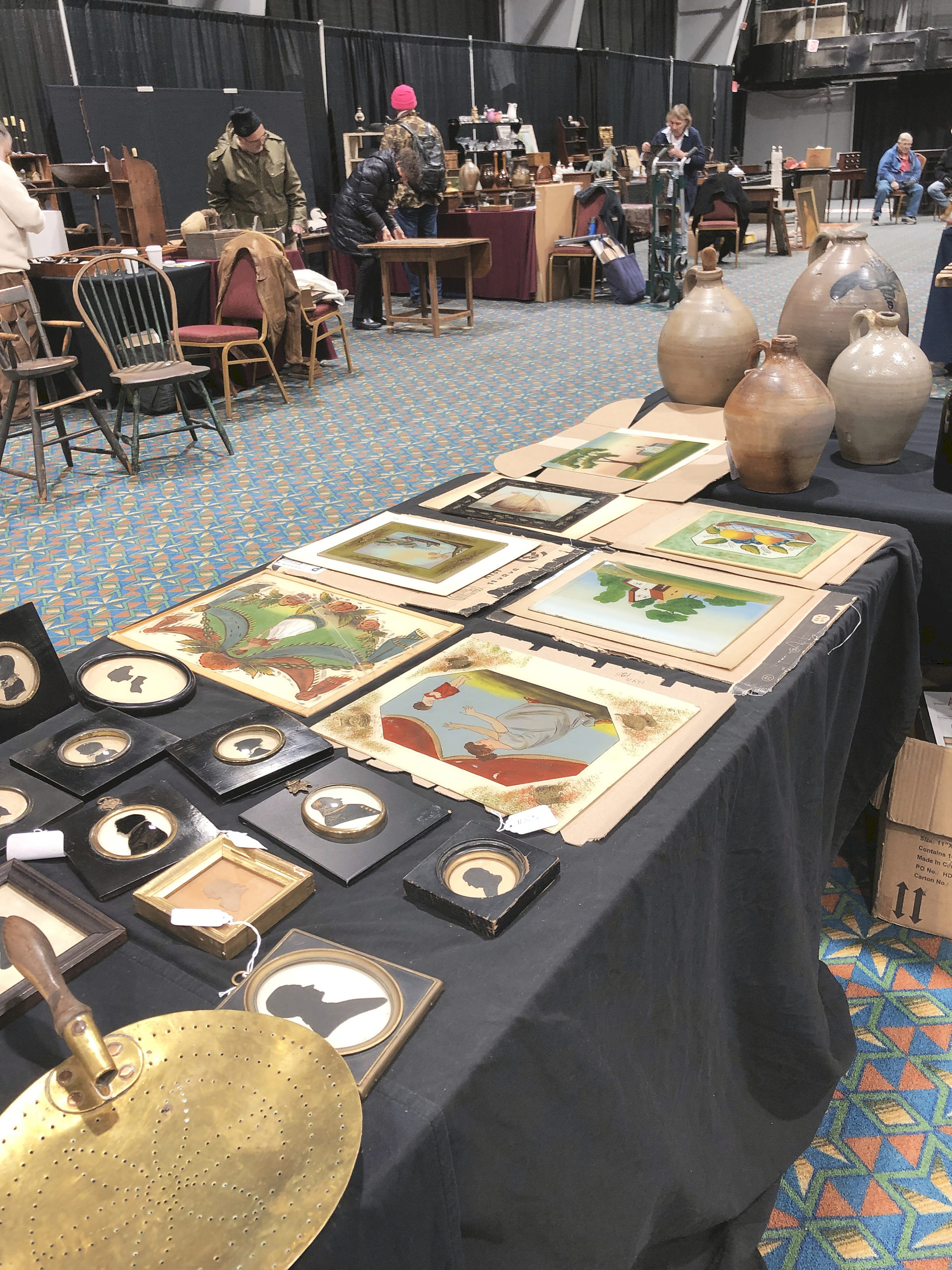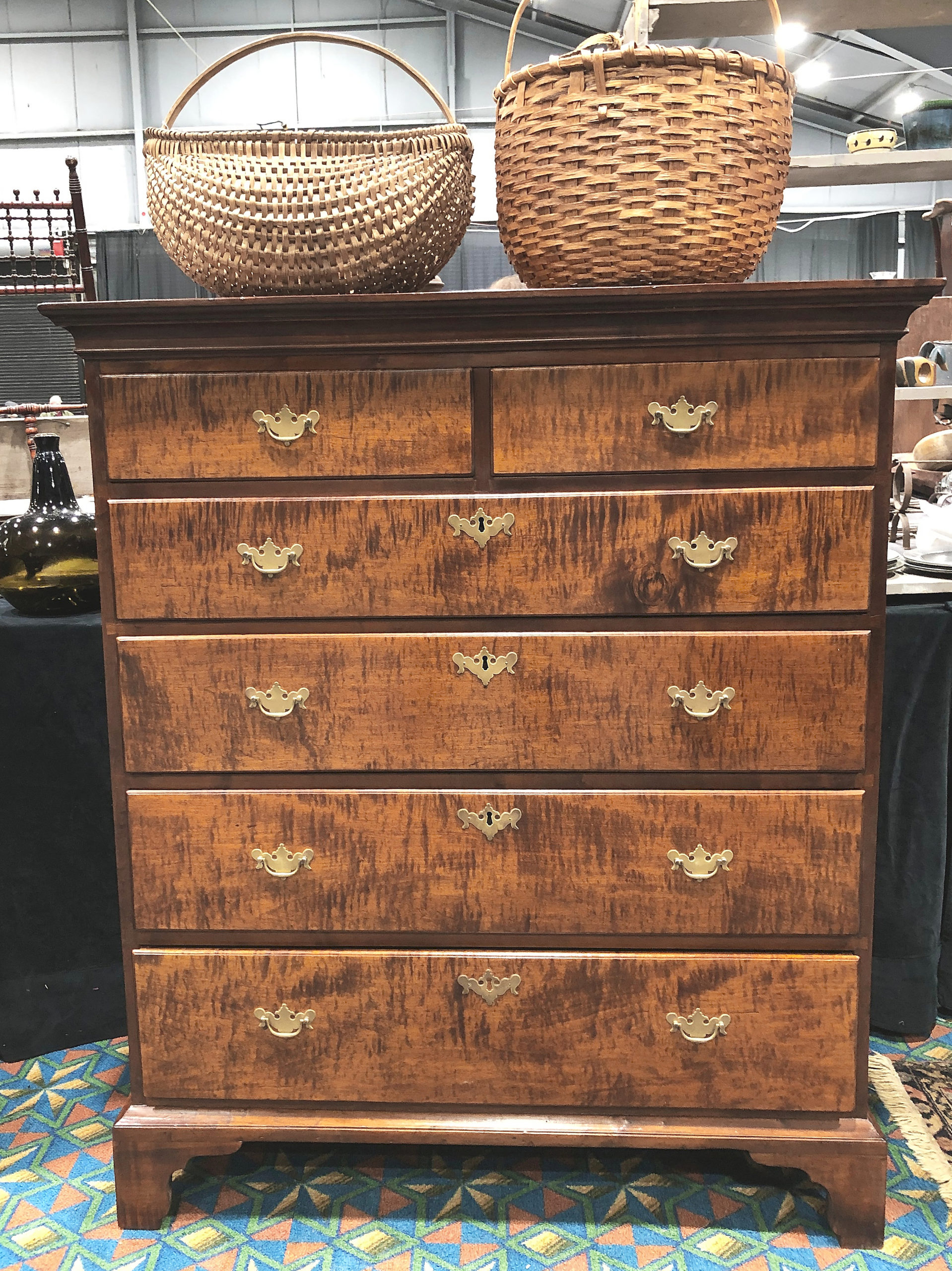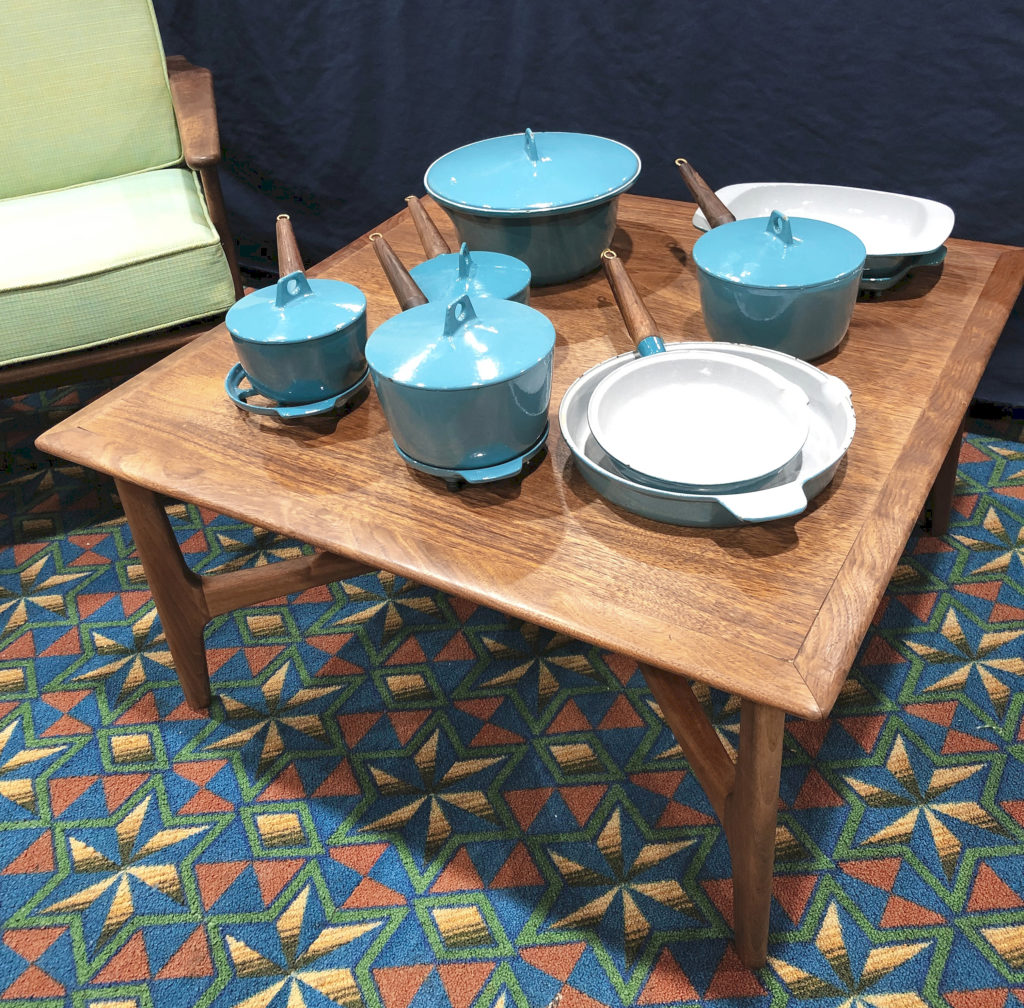
Brett Cabral, Salem N.H., brought a selection of silhouettes priced between $75 and $100. The reverse painted glass panels for clocks ranged from $100 to $150 each.
Review & Photos by Rick Russack
BOXBOROUGH, MASS. — Rachel and Josh Gurley’s January 8 show was short of a few dealers because of the flu going around, but that did not seem to bother anyone. Last minute cancellations allowed the Gurleys to increase booth and aisle sizes and resulted in less competition. There were plenty of buyers, the crowd was large and neither show attendees nor exhibitors were complaining about the cancellations. Just the opposite: a good time was had by all. As expected with a Gurley show, the emphasis was on country Americana but there was midcentury material, early delft and other ceramics, an Eighteenth Century Italian painting and more.
Welcoming customers to the show was the booth of Gurley Antiques, Scarborough, Maine, belonging to Josh and Rachel Gurley. They had a wide assortment of material, including an exceptional Inuit carving, probably from the rib of a whale. It was about a foot tall, representing a human figure, with carved arms, two legs and a large, stylized face with some features outlined in ink or paint. The rib was priced $650. Along with it was another Inuit carving done on a vertebra at $450, and both sold quickly. The Gurleys also sold a pair of Clement Drew (1806-1889) marine paintings to retail buyers for $1,900. Both showed ships in stormy seas and included lighthouses. Drew worked in Boston, where he advertised himself as both a painter and “dealer in picture-frames.”
Collectors of early Delft and other early ceramics had choices in several booths. Stephen Douglas at Walpole, N.H., offered mocha ware and other early English creamware and redware. Oliver Garland, Falmouth, Mass., had some Delft and so did John Marshall, Florence, Mass. Marshall is a dealer who began his career in antiques dealing with early ceramics and Americana and has now combined those interests with Midcentury Modern furniture and accessories. He had a bleu et blanc Delft plate with a town scene, a pond or small lake and a small boat and fishermen. Circa 1750, it was priced $950. While there was redware in several booths, Elaine Fleming, Middleboro, Mass., had one of the more unusual pieces. It was a large rooster, more than a foot tall, standing on three legs. It had black-painted details and the surface was finished to give the impression of feathers, and Fleming was asking $495.
While stoneware, redware, painted woodenware and other Americana were available in several booths, there were a number of unusual items. Paper or lithographed paper on wood jumping jacks are common, but have you ever seen a hand-forged, fully jointed one? Elaine Fleming also had an early example wearing a top hat and holding what was probably a bottle, while the other hand held what might have been a glass. It had a short section of chain attached to make it dance and Fleming was asking $250. Finding another would be a challenge.

The tiger maple chest with two drawers over four was $2,200. Martin Ferrick, Lincolnville, Maine, said it dated to about 1790 and had been made in Rhode Island or Connecticut.
A variety of early lighting devices were available. Rona Andrews, Worcester, Mass., had an exceptional large hanging tin and wrought iron chandelier. It had six wrought iron arms with candleholders and a twisted, wrought iron rod for hanging. With traces of old paint, it was priced $695. Bill Graham, Haverhill, Mass., had several brass and iron candlesticks.
Silhouettes and miniatures were available in several booths. Brett Cabral, Salem, N.H., had a large selection of silhouettes reasonably priced, some at less than $100. Dennis Raleigh, Searsport, Maine, had one that he said was quite rare and he was probably right as it sold during the show. It was a miniature profile of a young woman and on the reverse was a label that read “Likenesses Drawn in One Minute by J.H. Gillespie, Profile Painter.” Gillespie (1793-1849?), an itinerant artist worked in England and Scotland and is known to have worked in this country 1829-39. He used a physiognotrace to get a quick and accurate outline of his sitter.
Cigar store figures of Native Americans are sometimes carved with tobacco in one hand, but how often do you find actual handfuls of tobacco? Susan Wirth, Union, Conn., had several bunches of dried shade tobacco leaves grown in the Enfield, Conn., area and priced at just $10 a bunch. We may not think of Connecticut as a tobacco growing state, but high-quality tobacco has been grown there since the 1630s. Shade tobacco is grown under fabric, shading it from the sun, producing a high-quality cigar wrapper.
Brian Cullity, Sagamore, Mass., had a homemade Eidophusikon, better known as a moving diorama. Operated by a crank, the device showed an 84-inch-long hand-painted strip of paper depicting scenes at Nantasket Beach, which is in the town of Hull, south of Boston. It has been a tourist destination since the first hotel was built there in 1825 and later included a popular amusement park, which closed in 1984. The diorama, mounted within a homemade pine case, was in working condition and the scenery depicted included beach scenes, vacation homes and other Nineteenth Century local attractions. Cullity was asking $1,750. Oliver Garland, Falmouth, Mass., had a small collection of authentic Nineteenth Century Polynesian war clubs. Prices ranged from $450 to $1,100.

The enameled Danish modern cookware set by Voss was priced $350. John Marshall, Florence, Mass., also had this teak table, designed by Folks Ohlsson for Dux, and was asking $350.
A few days later, Rachel Gurley commented on the energy of the show, “We had a really enthusiastic crowd and there wasn’t a lull all day. It was steady and dealers commented on it. We’ve been getting more dealers with quality merchandise and not just Americana, across the board. We’re learning that advertising in the smaller local papers is really money well spent. They’re usually weeklies and they’re read by more than just one family member. That’s helping to get younger folks into the show. We’ll be back with shows scheduled for Boxborough both in February and March. “
For further information, call Rachel Gurley at 207-396-4255, or Josh Gurley, 207-229-0403, or visit www.gurleyantiqueshows.com.




























